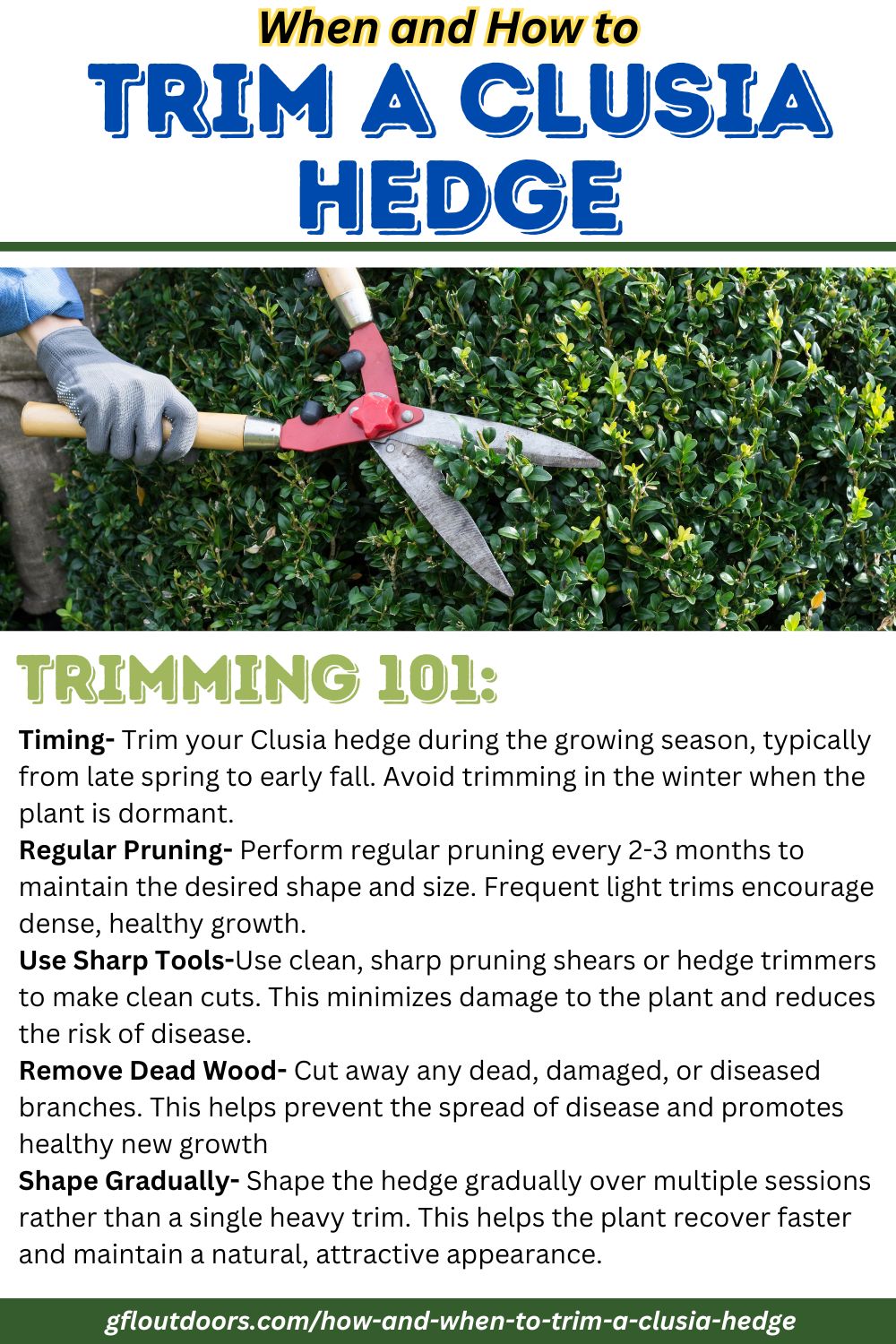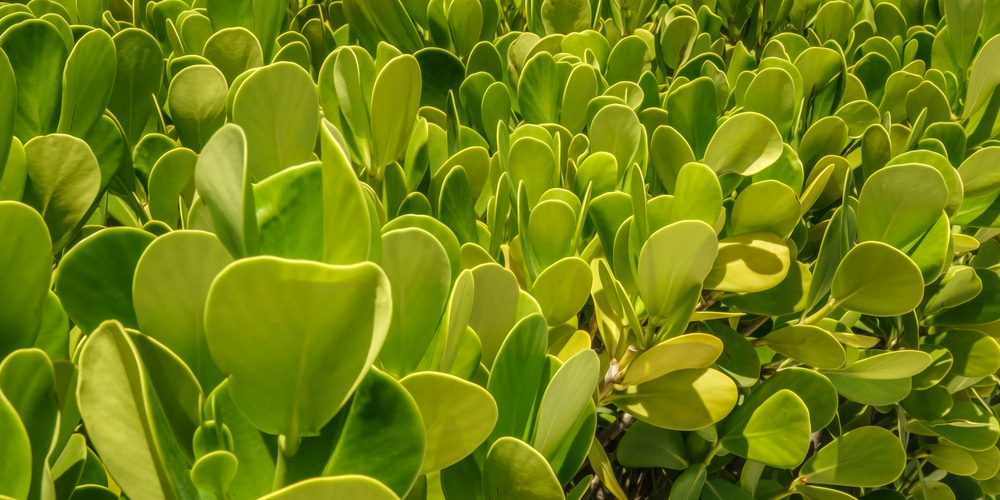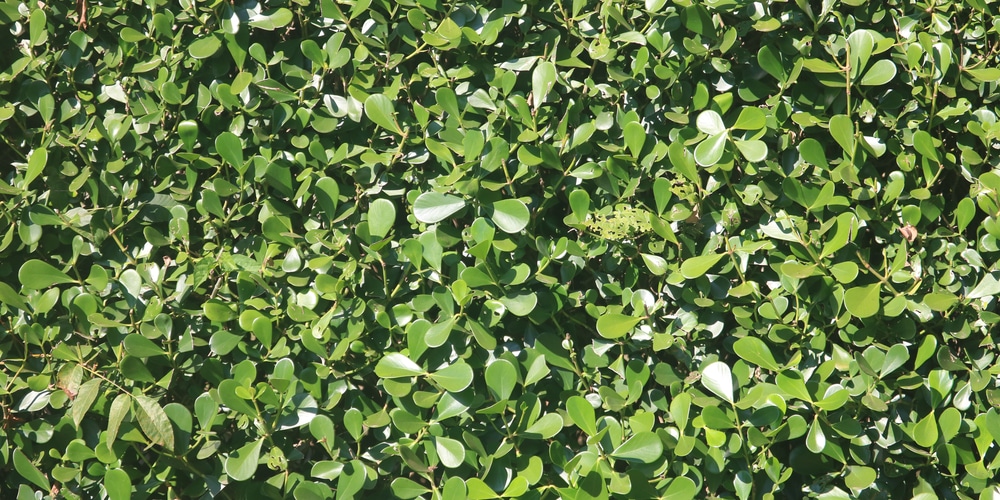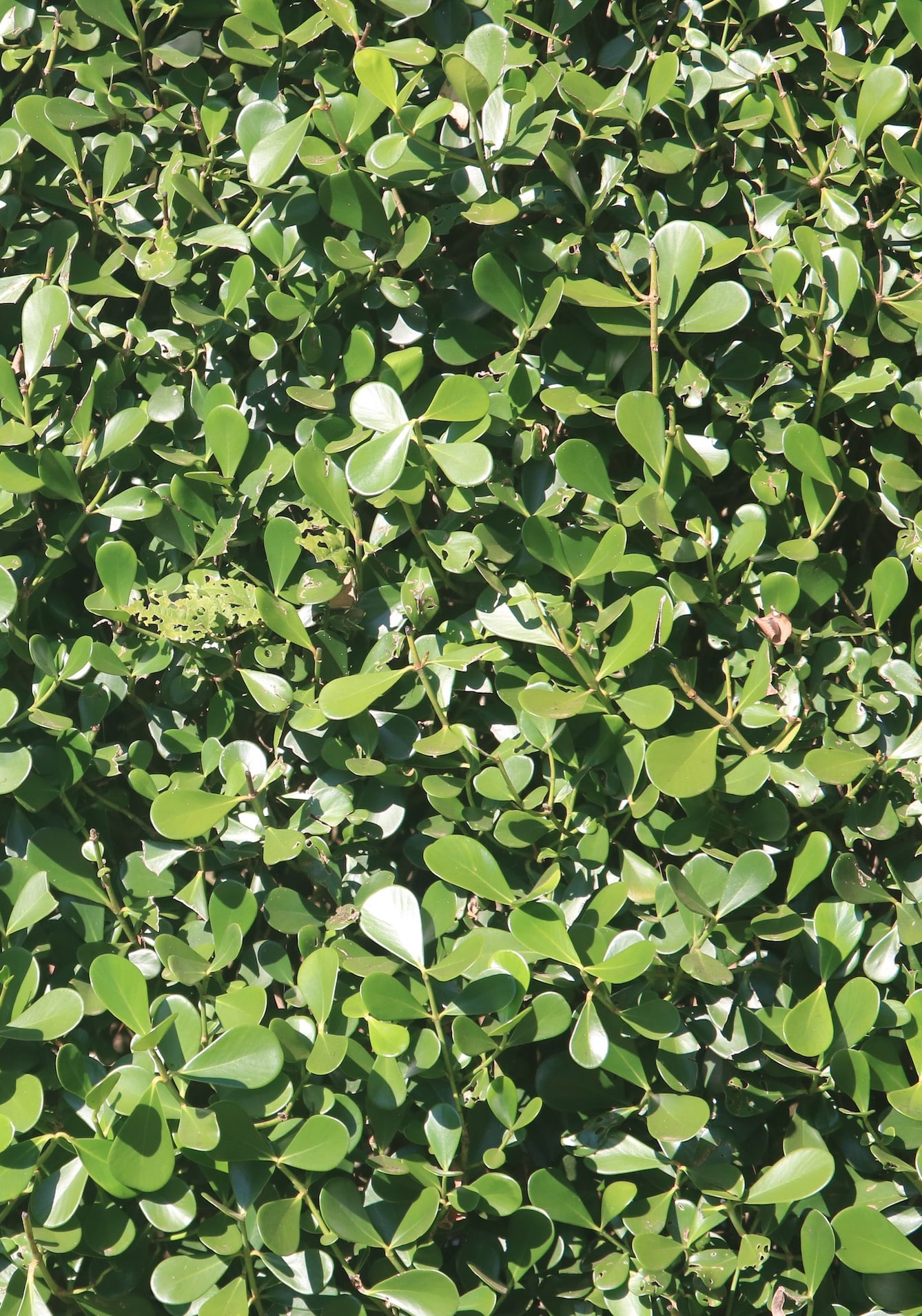
Trimming a Clusia hedge will help ensure that your hedge remains healthy, vibrant, and well-shaped throughout the year. Clusia, known for its thick leaves and resilience, makes an excellent hedge in landscapes.
Here’s a straightforward guide:
| When to Trim | How to Trim |
|---|---|
| Early Spring | Begin the growing season with a light trim to shape the hedge and remove any winter damage. This encourages new growth. Use sharp, clean shears or hedge trimmers. |
| Mid-Summer | Perform a more thorough trimming to maintain the desired shape and size. This is when Clusia grows most actively, so it can recover quickly from pruning. Trim back any overgrown areas, focusing on keeping the top slightly narrower than the base for sunlight penetration. |
| Late Summer | Optional light trimming can be done to neaten up the hedge before growth slows down in the fall. Avoid heavy pruning late in the season, as new growth may not harden off before cooler temperatures. |
| As Needed | Remove dead, diseased, or damaged branches as you notice them, regardless of the season. This helps maintain the health of the hedge. |
Additional Tips:
- Tools: Always use sharp and clean tools to make clean cuts. This prevents disease and promotes healthy growth.
- Technique: Cut just above a leaf node or branch to encourage branching and denser growth. Avoid cutting into old wood where there may not be new growth.
- Safety: Wear gloves and safety glasses to protect yourself from sharp leaves and branches.
- Watering and Feeding: After trimming, water your hedge well and consider applying a balanced fertilizer to support recovery and new growth.
This schedule and method for trimming your Clusia hedge will help keep it looking its best while promoting healthy growth patterns throughout the year.
When to Trim A Clusia Hedge
Before getting into the appropriate method to trim your clusia hedge, you should know when to carry out the procedure. Indeed, some times of the year are better than others.
Usually, if you do things right, you won’t need to prune your clusia hedge. To avoid stressing your plant too much and ensure a fast recovery, you should trim your plant from late March to April. While trimming isn’t as drastic as pruning, it is best to do so during the growing season, when your plant has enough energy to produce new growth.
Cutting your plant slightly back during the spring will encourage denser growth in the summer. For best results, trim your clusia hedge at the top. We recommend you give a look at your plant and decide how to shape it before starting to trim.
You should only cut overgrown branches to shape your plant as you please. Avoid overdoing it as you may stress your plant. Usually, younger plants need very little pruning.
Also, don’t forget to use adequate tools and equipment. Use sterile and sharp shears to avoid spreading infections or harming your plant. And if you are working on diseased branches, don’t forget to wash your scissors before continuing to healthy ones.
Why Should You Trim Your Clusia Hedge?
Besides improving the attractiveness of your garden (and keeping your hedge in shape), trimming your clusia will also minimize the risk of diseases and infections. Indeed, it will increase the airflow and make your plant stronger.
And while the plant isn’t susceptible to many diseases, pests will attack your plant if you don’t take care of it. Additionally, trimming promotes the growth of new branches and makes your plant bushier and more appealing, which can come in handy.
Clusia hedges grow fast: they might measure up to 30 feet tall. However, you can keep them in shape by regularly trimming them. Indeed, not everyone has the space to accommodate such a large plant.
Also, some people might want to give their hedges a particular form (for instance, squared), which can happen through trimming. But how do you cut a clusia hedge? Jump to the following section to get familiar with our tips!
How Do You Trim A Clusia Hedge?
So, as we mentioned before, the right time of the year to trim your clusia hedge is between March and April. And while you can carry out the procedure even at other times of the year, doing so in the spring will allow your plant to recover faster and display new growth by the end of the summer.
But of course, if you are dealing with a pest infestation, you should trim (or even prune) your clusia hedge as soon as you notice it. Still, trimming your clusia hedge in the early spring will make your plant less susceptible to future pest attacks.
When trimming your plant, you must be careful about how you cut it. Doing it the wrong way might cause severe wounds to your plant. And a wounded clusia hedge is more susceptible to diseases and infestations.
So, pay attention to making a shallow cut near the stem collar, cutting the opposite side, and removing the remaining stub to eliminate the risk of bark peeling. Even if this might sound demanding, don’t worry: you’ll master it with some practice!
Sometimes, it might be a good idea to “dress the wounds” you cause to your plant. Not many gardeners do so, but it can prevent future issues. And the best part is that it isn’t a demanding task. Apply a suitable dressing to the more severe wounds to protect your plant from diseases.
Related Article: Best Time of Year to Plant Shrubs
Last update on 2025-06-06 / Affiliate links / Images from Amazon Product Advertising API




